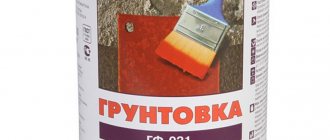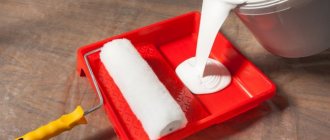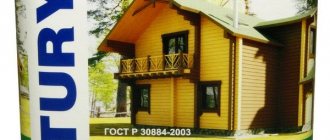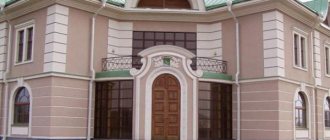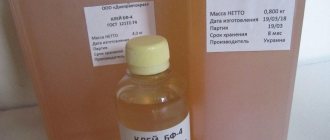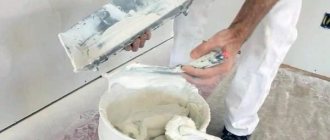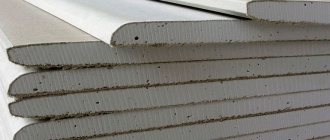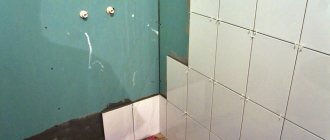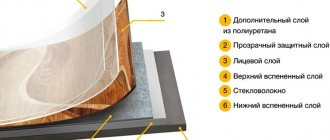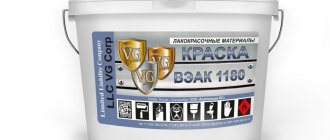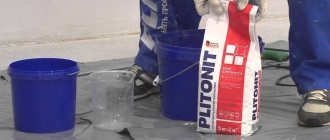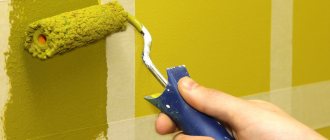For waterproofing, bitumen-based mastic is often used. It is produced by many manufacturers, but must be produced taking into account the requirements of the state standard. This indicator gives the buyer confidence that the product has been tested and meets the necessary standards. And the processing result will be effective. How the GOST bitumen mastic is described in it will be discussed in detail below.
What is GOST
The meaning of this abbreviation is the quality standard adopted by the state. Waterproofing mastic is determined according to GOST 30693-2000, where the main requirements for the composition are indicated, and the division by type is prescribed. For example, there is a polymer type with bitumen.
GOST specifies the rules for using products, what quality they should be, how they can be transported, stored, and other important issues that help to understand the standards for using various means. All these requirements are developed taking into account technological aspects, nuances studied in practice, etc.
The meaning of this abbreviation is the quality standard adopted by the state.
Composition of bitumen-polymer primers and mastics
To change the properties of bitumen and primer, polymers of the following groups are used:
- Thermoplastics or plastomers, which increase the elasticity and viscosity of bitumen at normal temperatures.
- Elastomers. These are polybutadienes, natural or reduced rubbers. They help maintain elasticity over a wide temperature range.
- Thermoelastomers. Subgroup of elastomers. Increases the resistance of mastics to high temperatures. At the same time, the bitumen melting threshold increases.
In connection with these, there are two main types of bitumen-polymer mastics:
- Modified with APP thermoplastic (isotactic polypropylene).
Most modern roofing materials are made with APP polymers
- Modified with SBS elastomers (butadiene-styrene-butadiene rubbers).
SBS additives in polymer-bitumen mastics and primers are 3-6%. Such compositions are subject to fraction separation during long-term storage, therefore, when preparing for work, this is taken into account and the bitumen-rubber compositions are thoroughly mixed.
Bitumen-polymer primers, as well as mastics, are produced on the basis of a mixture of solvents or in the form of a water-dispersed emulsion. Water emulsions are a more modern product. Bitumen-rubber compositions are produced in this form.
Purpose of GOST for bitumen mastics
GOST mastic is divided into several types; the basis for classification can be the purpose of the substance, for what surfaces and conditions it will be used. The following options stand out here:
- For the roof, this includes means for working with roofs, their repair or installation;
- For the purpose of waterproofing surfaces, substances that are coated on the base, creating a waterproofing layer;
- Serves as an adhesive to secure a variety of materials to protect surfaces from various factors, including roll types;
- For vapor barriers that provide this protection.
GOST mastic is divided into several types.
Bitumen for waterproofing in construction
TechnoNIKOL roofing mastic, according to GOST No. 2889-80, consists of bitumen and mineral or polymer fillers.
Fillers are substances that improve the properties of bitumen to meet specific requirements. This product is a universal waterproofing agent, plastic and adheres well to the surface. It is used as an independent roofing material (self-leveling roofing), or as an adhesive element for laying rolled materials. When installing a roof, a bitumen primer or primer is used together with mastic.
The source material for the production of TechnoNIKOL products, in addition to standards No. 2889-80, is also tested for compliance with GOST No. 22245-90 and 9548-74 (bitumen for construction and road work). Bitumen is an amorphous substance that, in its solid state, has the properties of a liquid. Fossil material, colloquially called rock tar.
Natural bitumen
By chemical nature it is an oxidized petroleum product. Therefore, bitumens are perfectly soluble in most existing solvents: gasoline, chloroform, carbon disulfide. Bitumen products are produced in briquettes or in dissolved form. Bitumen does not dissolve in water, but forms suspensions or emulsions.
The solvents used for liquid materials are expensive and toxic, so the industry produces emulsion compositions that are widely used in everyday life. Water-based polymer bitumen mastic is also produced. It is also called “liquid rubber”.
This material is used in compliance with safety measures, as it is flammable!
According to the GOST classification, depending on the form of release, TechnoNIKOL products are distinguished for hot and cold use.
What information can be obtained from GOST
Roofing mastic GOST determines not only the rules of storage, transportation and labeling. But also technical conditions, characteristics, safety measures, requirements for materials.
It also describes how testing of products should be carried out and what frequency should be used when checking quality. What requirements must the mastic layer meet, etc. All these norms help to understand what result will be obtained in the end.
Roofing mastic GOST determines not only the rules of storage, transportation and labeling.
Primer "Cordon"
Using the example of one of the popular primers (“Cordon”), we can consider the features of working with this material.
This composition boasts high adhesion and good protective properties.
This bitumen primer is used mainly for metal surfaces, for example, it serves as anti-corrosion protection for auto body parts.
If you need such a primer for your car, the work will go like this:
- The bottom of the car is cleaned of dirt and rust;
- The primer is thoroughly mixed to obtain the required working viscosity, the primer is diluted with white spirit or solvent (other solvents are also used);
- After you have applied the last layer of primer, you should not touch the car for a day;
- It’s great if the work is carried out in the fresh air; in extreme cases, this is done in a room with very good ventilation.
The price of a bitumen-polymer primer is higher than the price of a rubber-bitumen primer. The composition is sold either in tin cans, or in Euroballoons, aerosol cans.
>How to seal holes in a concrete slab using bitumen mastic (video)
Stamps
According to the marking division, it is stated here that bitumen mastics can be divided into five types. They differ in the level of heat resistance. So mastic with the brand MBK-55 can withstand temperatures of +55 degrees. The degree step is +10 degrees in this gradation.
Mastic with the brand MBK-55 can withstand temperatures of +55 degrees.
5. TEST METHODS
5.1. Checking the appearance (uniformity of the mastic, the presence of foreign inclusions and particles of filler, antiseptic or herbicide not covered with bitumen) is carried out visually.
5.2. Determination of heat resistance
5.2.1. Equipment and accessories Laboratory drying cabinet with perforated shelves, ventilated, allowing automatic adjustment of the set temperature. A flat metal plate with dimensions of 50x100x2 mm.
5.2.2. Preparation for testing To determine heat resistance, a uniform layer of 8 - 10 g of mastic, preheated to a temperature of 140 - 160 ° C, is applied to a sample of glassine measuring 50x100 mm. A piece of glassine of the same size is placed on top and pressed with a load of 2 kgf for 2 hours. The load is applied through a flat metal plate measuring 50x100x2 mm. The drying cabinet is heated, depending on the brand of mastic, to the temperature indicated in the table. 2.
5.2.3. Carrying out the test After 2 hours of exposure, samples with mastic grades MBK-G-55 or MBK-G-65 are placed in a heated drying oven on an inclined stand (20%), and with mastic grades MBK-G-75, MBK-G-85, MBK-G-100 - on an inclined stand (100% at an angle of 45°). The samples are kept in the cabinet for 5 hours at a given temperature, after which the samples are removed and inspected.
The mastic is considered to have passed the test if it does not flow or begin to slide.
5.3. Determination of flexibility The method is based on bending a sample of glassine with mastic applied to it along the semicircle of a rod of a certain diameter at a given temperature.
5.3.1. Equipment and accessories
Thermometer according to GOST 28498
.
Rods with a diameter of 10, 15, 20, 30, 40 mm.
Vessel for water.
5.3.2. Preparation for testing 8-10 g of mastic, preheated to 140-160°C, is applied in a uniform layer to a glassine sample measuring 50x100 mm. After this, the sample is kept for 2 hours at a temperature of (18±2) °C in air. Then water is poured into the vessel, the temperature of which should be (18±2) °C. The samples and the rod are placed in this vessel with water and kept in it for 15 minutes.
5.3.3. Carrying out the test After keeping in water, the sample is slowly bent along the semicircle of the rod for 5 seconds with the front surface (mastic) upward. The time from the moment the sample is removed from the water and bent along the semicircle of the rod should not exceed 15 s. The mastic is considered to have passed the test if no cracks form on the surface of the sample.
5.4. Determination of the adhesive properties of mastic The essence of the method is to determine the load required to break two glued samples of a certain length and width.
5.4.1. Equipment and accessories Testing machine brand RT-250M-2 or similar machines having a working part of the scale from 0 to 100 kgf with a division value of no more than 0.2 kgf, with a permissible error of readings within the working scale of +/-1%. Laboratory drying cabinet with perforated shelves, ventilated, allowing automatic temperature control. Metal plate.
5.4.2. Preparation of samples for testing Two glassine samples measuring 50x140 mm, cut from a roll in the longitudinal direction, are glued together with mastic over an area of 50x60 mm. Mastic heated to 140-160 °C in an amount of 4-6 g is applied to the surface of both samples so that one end of each sample remains uncoated with mastic. The glued samples are pressed with a weight of 1 kg through a metal plate and kept for 2 hours at a temperature of (20±2)°C. 3 samples are prepared for testing.
5.4.3. Carrying out the test 2 hours after gluing, the samples are placed in the clamps of the tensile testing machine without distortion. The sample is tested at a constant speed of movement of the movable clamp of 50 mm/min until rupture, which should occur on the glassine.
5.5. Determination of filler content after heating The filler content is determined by the combustion method according to GOST 2678
with the following addition. A mastic sample is poured into a split cylinder with a diameter of 20 mm and a height of 150 mm, which is placed in a drying cabinet, heated to a temperature of 160 ° C (when using a surfactant, up to 130 ° C) and kept at this temperature for 5 hours. After cooling to room temperature, the mastic is removed from the cylinder and samples weighing at least 1 g each are taken (from the bottom and in the middle of the cylinder). The test results must comply with the requirements of clause 2.6.
5.6. Determination of the softening temperature of mastic - according to GOST 11506
.
5.7. Determination of filler content - according to GOST 2678
.
5.8. Determination of water content in mastic - according to GOST 2477
.
Technical requirements
To understand what standards a mastic mixture should be, you need to understand the requirements for it. This is how GOST defines the technical requirements described below:
- Substances must be homogeneous, there are types that may have some impurities, but not exceeding the standards;
- Due to ease of use, there can be ready-made formulations, or from several components that are supplied in one package;
- The degree of flexibility, this factor is determined by bending on the beam, the radius should be five millimeters, exposure to certain temperatures is applied;
- Harmful elements should not be released excessively;
- Degree of water resistance. Roofing mastics can withstand exposure to water of 0.1 atm for 72 hours, for waterproofing 0.3 atm for ten minutes;
- If the mastic mixture is colored, then it must last for 120 minutes to test the color fastness;
- Rolled products must be firmly glued with mastic.
Substances must be homogeneous, there are types that may have some impurities, but not exceeding the standards.
Properties of bitumen-polymer mastics and primers
Although all polymer-bitumen compositions are conventionally classified into one group, the properties of modified mastics vary greatly depending on the type of additive. Moreover, strengthening properties in one aspect leads to loss of qualities in another. Therefore, when purchasing, focus on the composition:
APP materials are distinguished by such qualities
- UV resistance.
- Resistant to aggressive alkalis and acids.
- High melting threshold.
- Resists fatigue from repeated use and shows no signs of aging.
- Increased adhesion to smooth surfaces - glass, metal.
SBS materials are characterized by increased ductility:
- Retains elasticity at low temperatures.
- The elasticity of the coating does not change over a wide range of base temperatures from -40 to + 80.
For laying tiles, similar bitumen compositions with SBS polymers are used.
These lists are used crosswise when talking about qualities that the mixture does not possess.
The properties of solvent-based primers differ from water-dispersion ones. While compositions with solvents are characterized by a high drying rate, emulsions are environmentally friendly and can be used indoors without risk to health. Aqueous formulations have better penetrating ability because they have a lower viscosity compared to solvent-based primers.
Safety requirements
Hot bitumen roofing mastic GOST is characterized by high-temperature effects. For this reason, the master must be protected, wear protective clothing, as well as personal protective equipment. Shoes must also withstand such exposure.
If a small fire occurs, then you should act in the following way: sand, felt, special powders, and foam fire extinguishers are used to extinguish the fire. For large fires, a foam jet and water from fire monitors are used.
The master must be protected, wear protective clothing, as well as personal protective equipment.
Details GOST 2889-80 Hot bitumen roofing mastic. Technical conditions.
This standard applies to bitumen roofing hot mastic, which is a homogeneous mass consisting of bitumen binder and filler and used in a hot state. Mastic can be made with the addition of antiseptics and herbicides. The mastic is intended for installation of roll roofs, as well as mastic roofs reinforced with glass materials.
Table No. 1. The scope of application of the mastic is given in the table below (recommended Appendix 1 to the standard).
| Construction area | Mastic for installing roofs with a slope, % | Junction places | ||
| less than 2.5 | 2.5 - less than 10 | 10-25 | ||
| North of geographical latitude 50 - for the European and 53 - for the Asian part of Russia | MBK-G-55 | MBK-G-65 | MBK-G-75 | MBK-G-85 |
| South of these areas | MBK-G-65 | MBK-G-75 | MBK-G-85 | MBK-G-100 |
Mastics of the MBK-G-55 and MBK-G-65 brands should be used for gluing antiseptic roofing felt and glass roofing felt, and mastics of the MBK-G-55A and MBK-G-65A brands should be used for gluing non-antiseptic roofing felt; mastics of the MBK-G-55G and MBK-G-65G brands - for installing a protective layer on roofs. The numbers in the symbols of mastic brands indicate its heat resistance in °C. In the designation of brands of mastic with additives of antiseptics or herbicides, after the heat resistance number, add the letter A or G, respectively. In appearance, the mastic should be homogeneous without foreign inclusions and particles of filler, antiseptic or herbicide not coated with bitumen. On a mastic cut with an area of 50 cm2 there should not be more than two unimpregnated particles of filler, antiseptic or herbicide larger than 0.4 mm in size.
Table No. 2. Depending on the brand, the mastic must meet the requirements given in the table below.
| The name of indicators | Standard for mastic brands | ||||
| MBK-G-55 | MBK-G-65 | MBK-G-75 | MBK-G-85 | MBK-G-100 | |
| Heat resistance for 5 hours, °C, not less | 55 | 65 | 75 | 85 | 100 |
| Softening temperature using the “ring and ball” method, °C | 55 — 60 | 68 — 72 | 78 — 82 | 88 — 92 | 55 — 60 |
| Flexibility at a temperature of 18 ± 2 °C on a rod with a diameter, mm | 10 | 15 | 20 | 30 | 40 |
| Filler content,% by weight: | |||||
| fibrous | 12 — 15 | 12 — 15 | 12 — 15 | 12 — 15 | 12 — 15 |
| dusty | 25 — 30 | 25 — 30 | 25 — 30 | 25 — 30 | 25 — 30 |
| Water content | Footprints | ||||
Mastic can be packed in steel barrels with a removable bottom, in wooden barrels or drums, or in paper bags with an anti-adhesive layer. To construction sites located near centralized production sites, mastic should be transported heated to 160 - 180 ° C in special vehicles equipped with mixers. Travel time should not exceed 3 hours.
The packaging of the mastic must indicate indelible paint:
— name or trademark of the manufacturer;
- brand of mastic;
— name of the filler;
- batch number.
Each shipped batch of mastic must be accompanied by a document certifying the quality, which must indicate:
— name or trademark of the manufacturer;
- the number of seats in the party and their mass;
- brand of mastic;
— name of fillers and their percentage in the mastic;
— name of the antiseptic or herbicide and their percentage in the mastic;
— test results;
— designation of this standard.
Mastic should be stored separately by brand indoors. The guaranteed shelf life of the mastic is one year from the date of manufacture. After the warranty period has expired, before use, the mastic must be checked for compliance with the requirements of this standard.
TU 21-5744710-512-91 Bitumen-butyl rubber cold roofing and waterproofing mastic.
The mastic is intended for installation and repair of roofs, external waterproofing of building structures. Remains operational in the temperature range from minus 65 to plus 130 °C. Mastic is a multicomponent homogeneous mass obtained by mixing in a ratio of 50:1 by weight two compositions - liquid vulcanizing composition “B” and paste composition “A” containing a vulcanization activator. Mastic is bioresistant. The two compositions are mixed at the point of consumption in any mixing equipment in a ratio of 50:1 by weight. Composition “A” may separate or dry out during long-term storage (addition of the required amount of water is required). Before introducing it into composition “B”, composition “A” should be mixed until completely homogeneous throughout the entire volume using paddle mixers or other mixing equipment. The finished mastic in appearance should be a homogeneous mass of black color. The readiness of the mastic is checked by dry residue (at least 27%), conditional viscosity (within 200 - 300 s) and conditional vulcanization time at a temperature of 20 ± 5 ° C (3 - 24 hours). The mastic must withstand flexibility tests. When testing a mastic sample on a beam with a radius of curvature of 5 ± 0.2 mm at a temperature of minus 65 ± 1 °C, there should be no cracks on the surface of the sample. The mastic must be waterproof. When tested at a pressure of 0.10 ± 0.01 MPa (1.0 ± 0.1 kgf/cm2) for at least 10 minutes, there should be no signs of water penetration on the surface of the sample. The mastic must be heat resistant. When tested at a temperature of 130 ± 2 °C for at least 5 hours, there should be no swelling on the surface of the sample.
Table No. 3. The physical and mechanical properties of the mastic must meet the requirements given in the table below.
| Indicator name | Norm |
| Strength of adhesion to concrete, MPa (kgf/cm2) not less | 0,5 (5,0) |
| Water absorption for 24 hours, % by weight, no more | 0,5 |
| Conditional strength, MPa (kgf/cm2), not less | 0,7 (7,0) |
| Elongation at break, %, not less | 400 |
| Conventional vulcanization time, h, within | 3 — 24 |
| Conditional viscosity, s, within | 200 — 300 |
| Dry residue content, % by weight, not less | 27 |
Composition “B” of the mastic is supplied by the manufacturer in hermetically sealed metal containers (steel or aluminum barrels), and composition “A” is supplied in polyethylene containers weighing no more than 5 kg. The filling volume of the container should be no more than 90%. It is allowed to supply compositions “B” and “A” in other containers that ensure the preservation of the properties of the mastic compositions.
Each container must be affixed with a label indicating:
— name of the manufacturer or its trademark;
— designations of technical conditions;
— date of manufacture;
— mass of the container;
— guaranteed shelf life.
The label must contain the words “FLAMMABLE” and “EXPLOSIVE”. Each batch of mastic must be accompanied by a quality document. The mastic should be stored in a room equipped with supply and exhaust ventilation. During storage, the mastic should be protected from direct exposure to sunlight. The guaranteed shelf life of the mastic is at least 3 months from the date of its manufacture. After the warranty period has expired, the mastic must be checked before use for compliance with technical specifications and, if the results are positive, it can be used for its intended purpose.
Like
Add a comment
Only registered users can leave comments. Swearing, flooding, insults of other users, and unreasoned statements are prohibited. Links to other sites and advertising, only with the permission of the administrator or employee of the company.
JComments
Acceptance rules
The manufacturer must test the mastic produced. The product is tested in batches, which includes those that were produced from identical materials and according to the same recipes. For testing, 3% of the volume is taken.
They control external data, heat resistance, softening temperature indicators, flexibility. Also, batch tests are carried out periodically; if there are shortcomings, then the tests are repeated with the selection of a greater percentage of mastic twice.
For testing, 3% of the volume is taken.
What are primers used for?
Polymer-bitumen primers are used for the following purposes:
- Ensuring good adhesion of insulating materials and mastic to the base. Modern compositions provide a setting force of 0.15-0.55 MPa.
- Strengthening the foundation.
- Binding of small particles into a single, monolithic layer.
- Filling cracks, insulating inaccessible surfaces. Spreading, the primer penetrates into all recesses.
- Using a primer reduces mastic consumption.
- Priming of cement-sand screeds, structures made of concrete, metal, wood, constantly in contact with water.
Priming concrete
Special recommendations for use:
- The bitumen-polymer primer is not used in rainy weather. After completion of the work, until completely dry (within 24 hours), the surface is protected from rain.
- Do not allow solvents to come into contact with the soil surface.
- When performing waterproofing indoors, ventilation is provided.
- The operating temperature range allows you to work in severe frost (-20°C) and in sultry heat (+40°C). Maximum air humidity is 80%.
Bituminous primer is usually 1/100th of the total roof estimate, so there is no point in abandoning preparatory work.
Despite its high performance qualities, the drawback is the inability to use on wet surfaces. Recently, bitumen-polymer mastics and primers have appeared on the market, which, in addition to polymers, contain oil-soluble corrosion inhibitors (indene-coumaron resin and technical lanolin). They are specially designed for processing pipelines. The resin displaces water from the metal surface, and thanks to adhesion, a protective adsorption layer appears.
Bitumen Primer Review:
>Application rules
The durability of the insulating coating and its tightness are achieved with proper application of primer to the base:
Packaging, labeling, transportation and storage
The packaging can be steel and wood barrels, a wooden drum, or paper bags with an anti-adhesive layer. It is important that some characteristics are marked on the packaging, including: brand, manufacturer's name, batch number, filler name.
Transportation can be carried out using any vehicle. Mastic must be stored indoors according to the brand.
Transportation can be carried out using any vehicle.
Scope of use
Thanks to its good water-repellent properties, BN 90/10 bitumen is recognized as an excellent and inexpensive insulating material that protects against moisture. In construction, it is used for hydraulic insulation of basements using coating. The material is used for joints of reinforced concrete panels, foundations, during installation and restoration of the roof, to form a concrete base for laying materials. In addition, it can be used to fill cracks.
This material is widely used in the installation and repair of pipelines, sewers, in the construction of tunnels, bridges, and also in mine construction. It provides external waterproofing of building structures not only made of stone, but also of metal, wood and other materials. BN 90/10 is a raw material for the production of hydraulic insulation and mastic based on it.
Appendix 3 (informative), list of products used as surfactants
Surfactant products are also important; there is a narrow list of elements suitable for this purpose. If desired, they can always be studied in the state standard; they help to obtain the desired result after applying the product.
Surfactant products are important, there is a narrow list of elements suitable for this purpose.
Thus, GOST strictly regulates the production of mastic products. And manufacturers who produce mastics according to these standards guarantee compliance and quality of their products. The consumer can be confident that the product has passed the required tests and will meet the stated characteristics.
Hot mastic TechnoNIKOL - material for professional use
Cold roofing bitumen mastic is a ready-to-use material, while hot bitumen mastic is melted before application, which requires special equipment. Heating temperature – up to 180 °C. The duration of heating is indicated by the manufacturer, since this not only liquefies the material, but also dehydrates it. In this case, they do not talk about melting the bitumen, but about “cooking” it.
The material is applied in a liquid state, which allows it to fill cracks and voids in the surface, causing the coating to become airtight.
Preparation of material for coating
In liquid form, cold bitumen mastic hardens as the solvent evaporates, and hot bitumen mastic hardens as it cools, so the latter hardens faster after application. At the same time, when the mastic hardens, it does not shrink, since it does not lose volume in the form of evaporating solvents.
The resulting coating has the following properties:
- resistance to external aggressive factors;
- light weight and thickness;
- elasticity;
- strength;
- resistance to corrosion, rotting;
- does not undergo oxidation and is not destroyed under the influence of ultraviolet radiation.
This coating does not have joining seams; it covers surfaces with a protective film, especially pipe outlets and interpanel seams that are difficult to seal.
Hot roofing bitumen mastic, according to GOST No. 2889-80, contains a minimum of additional components. The cost is much lower than cold-applied material and therefore it is used for large volumes of work.
4.3. Marking
4.3.1. Each container must have a label pasted or attached to it indicating:
— name of the manufacturer or its trademark;
— name of the mastic, component index or composition (for multi-component mastics);
— designation of a regulatory document for a specific type of mastic;
— batch number and date of manufacture;
— net mass of the container;
- brief instructions for use.
4.3.2. The list of instructions on the label can be supplemented or changed in accordance with the requirements of the regulatory document for a specific type of mastic.
4.3.3. Transport marking - according to GOST 14192.
Normative references
This standard uses references to the following standards:
GOST 12.3.009-76 SSBT. Loading and unloading works. General safety requirements.
GOST 14192-96 Marking of cargo.
GOST 26589-94 Roofing and waterproofing mastics. Test methods.
GOST 30244-94 Construction materials. Combustibility test methods.
GOST 30402-96 Construction materials. Flammability test methods.
GOST 30444-97 Construction materials. Flame propagation test method.
